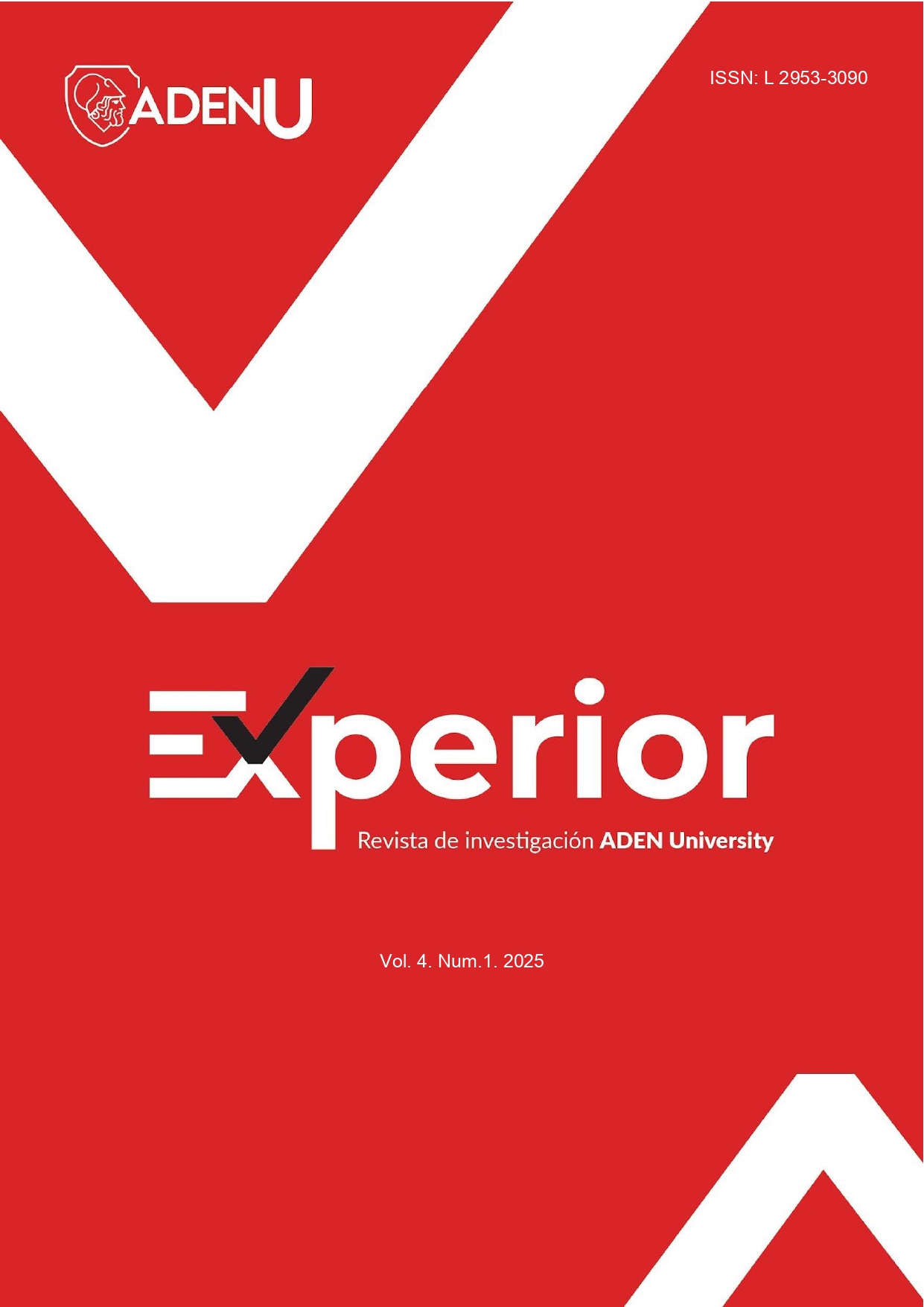Descarbonización en el transporte marítimo
DOI:
https://doi.org/10.56880/experior41.5Palabras clave:
comercio internacional, contaminación del agua, desarrollo económico, efectos de las actividades humanas, transporte marítimoResumen
El transporte marítimo es la vía principal para el comercio global, pero genera un 3% de las emisiones mundiales de dióxido de carbono, estableciendo la necesidad de disminuir esta cifra para cumplir con los objetivos de sostenibilidad ambiental y combatir el cambio climático. El estudio busca analizar las estrategias para la descarbonización del transporte marítimo y su impacto en la sostenibilidad ambiental, los costos operativos y el cumplimiento de las regulaciones internacionales. Se utilizó un enfoque cualitativo, descriptivo y transversal, aplicando la técnica de saturación de información para extraer 32 referencias. Las estrategias se centraron en mejorar la eficiencia energética, el uso de combustibles alternativos y la implementación de tecnologías de reducción de emisiones, destacando el diseño de buques, los sistemas de propulsión, y la mejora de rutas y planificación de la navegación. Del estudio se desprende que se necesitan altos niveles de inversión para el desarrollo y adopción de tecnologías libres de carbono. Las regulaciones internacionales, aunque necesarias, deben ser equilibradas para no afectar negativamente la competitividad del sector, ya que la descarbonización total requiere de un esfuerzo global, innovación continua y políticas públicas que mejoren la transición hacia la navegación marítima sostenible.
Descargas
Referencias
Al-Enazi, A., Okonkwo, E. C., Bicer, Y., & Al-Ansari, T. (2021). A review of cleaner alternative fuels for maritime transportation. Energy Reports, 7, 1962-1985. https://doi.org/10.1016/j.egyr.2021.03.036
Ampah, J. D., Yusuf, A. A., Afrane, S., Jin, C., & Liu, H. (2021). Reviewing two decades of cleaner alternative marine fuels: Towards IMO's decarbonization of the maritime transport sector. Journal of Cleaner Production, 320, 128871. https://doi.org/10.1016/j.jclepro.2021.128871
Atilhan, S., Park, S., El-Halwagi, M. M., Atilhan, M., Moore, M., & Nielsen, R. B. (2021). Green hydrogen as an alternative fuel for the shipping industry. Current Opinion in Chemical Engineering, 31, 100668. https://doi.org/10.1016/j.coche.2020.100668
Balcombe, P., Brierley, J., Lewis, C., Skatvedt, L., Speirs, J., Hawkes, A., & Staffell, I. (2019). How to decarbonise international shipping: Options for fuels, technologies and policies. Energy conversion and management, 182, 72-88. https://doi.org/10.1016/j.enconman.2018.12.080
Bigi, N., Roncin, K., Leroux, J. B., & Parlier, Y. (2020). Ship towed by kite: Investigation of the dynamic coupling. Journal of Marine Science and Engineering, 8(7), 486. https://doi.org/10.3390/jmse8070486
Bouman, E. A., Lindstad, E., Rialland, A. I., & Strømman, A. H. (2017). State-of-the-art technologies, measures, and potential for reducing GHG emissions from shipping–A review. Transportation Research Part D: Transport and Environment, 52, 408-421. https://doi.org/10.1016/j.trd.2017.03.022
Calatayud, A. & Rivas Amiassorho, M.E. (2024). El futuro del transporte marítimo en la región: estrategias para la descarbonización y adaptación al cambio climático. En Moviliblog, BID. https://n9.cl/3lljj
Chavando, A., Silva, V., Cardoso, J., & Eusebio, D. (2024). Advancements and Challenges of Ammonia as a Sustainable Fuel for the Maritime Industry. Energies, 17(13), 3183. https://doi.org/10.3390/en17133183
Comisión Europea. (2024). Reducción de las emisiones del sector naviero. https://n9.cl/73h2l
Danish Maritime Authority. (2022). New Partnership between Danish Maritime Authority and Mærsk Mc-Kinney Møller Center for Zero Carbon Shipping. https://n9.cl/ps011
Elrhoul, D., Romero Gómez, M., & Naveiro, M. (2023). Review of green hydrogen technologies application in maritime transport. International Journal of Green Energy, 20(15), 1800-1825. https://doi.org/10.1080/15435075.2023.2194384
Foretich, A., Zaimes, G. G., Hawkins, T. R., & Newes, E. (2021). Challenges and opportunities for alternative fuels in the maritime sector. Maritime Transport Research, 2, 100033. https://doi.org/10.1016/j.martra.2021.100033
Gilbert, P., Bows-Larkin, A., Mander, S., & Walsh, C. (2014). Technologies for the high seas: Meeting the climate challenge. Carbon Management, 5(4), 447-461. https://doi.org/10.1080/17583004.2015.1013676
IMO. (2024). Decarbonizing transport: a common goal. https://n9.cl/run0qr
Lindstad, E., Lagemann, B., Rialland, A., Gamlem, G. M., & Valland, A. (2021). Reduction of maritime GHG emissions and the potential role of E-fuels. Transportation Research Part D: Transport and Environment, 101, 103075. https://doi.org/10.1016/j.trd.2021.103075
Lindstad, H. (2013). Strategies and measures for reducing maritime CO2 emissions. (Ph.D. Dissertation). Norwegian University of Science and Technology. https://n9.cl/si9xn
Mallouppas, G., & Yfantis, E. A. (2021). Decarbonization in Shipping Industry: A Review of Research, Technology Development, and Innovation Proposals. Journal of Marine Science and Engineering, 9(4), 415. https://doi.org/10.3390/jmse9040415
Nguyen, H. P., Hoang, A. T., Nizetic, S., Nguyen, X. P., Le, A. T., Luong, C. N., ... & Pham, V. V. (2020). The electric propulsion system as a green solution for management strategy of CO2 emission in ocean shipping: A comprehensive review. International Transactions on electrical energy systems, 31(11), e12580. https://doi.org/10.1002/2050-7038.12580
OMC. (2024). Transporte marítimo. https://n9.cl/c8uzk
OMI. (2015a). “El transporte marítimo: indispensable para el mundo”, seleccionado como lema del Día marítimo mundial de 2016. https://n9.cl/nsspw
OMI. (2015b). El Proyecto de asociaciones para la eficiencia energética marítima mundial (GloMEEP) se pone en marcha oficialmente en Singapur. https://n9.cl/mmysr
OMI. (2023). Gases de efecto invernadero. https://n9.cl/9dkhl
Psaraftis, H. N. (2016). Green maritime transportation: Market based measures. In Green transportation logistics: The quest for win-win solutions (pp. 267-297). Cham: Springer International Publishing. https://doi.org/10.1007/978-3-319-17175-3_8
Raucci C., McKinlay, C. & Karan, A. (2023). The future of maritime fuels. What you need to know. Lloyd’s Register Maritime Decarbonisation Hub. https://n9.cl/temfp
RESOLUTION MEPC.304[72]. (2018). Note by the International Maritime Organization to the UNFCCC Talanoa Dialogue. Adoption of the initial imo strategy on reduction of ghg emissions from ships and existing imo activity related to reducing ghg emissions in the shipping sector, Adopted on 13 April.
Shi, Y. (2016). Reducing greenhouse gas emissions from international shipping: Is it time to consider market-based measures? Marine Policy, 64, 123-134. https://doi.org/10.1016/j.marpol.2015.11.013
Szlapczynska, J., & Smierzchalski, R. (2007). Adopted isochrone method improving ship safety in weather routing with evolutionary approach. International Journal of Reliability, Quality and Safety Engineering, 14(06), 635-645. https://doi.org/10.1142/S0218539307002842
Tezdogan, T., Incecik, A., Turan, O., & Kellett, P. (2016). Assessing the impact of a slow steaming approach on reducing the fuel consumption of a containership advancing in head seas. Transportation Research Procedia, 14, 1659-1668. https://doi.org/10.1016/j.trpro.2016.05.131
Traut, M., Gilbert, P., Walsh, C., Bows, A., Filippone, A., Stansby, P., & Wood, R. (2014). Propulsive power contribution of a kite and a Flettner rotor on selected shipping routes. Applied Energy, 113, 362-372. https://doi.org/10.1016/j.apenergy.2013.07.026
UNCTAD. (2024). Review of maritime transport. Navigating maritime chokepoints. United Nations.
Wan, Z. (2018). Decarbonizing the international shipping industry: Solutions and policy recommendations. Marine Pollution Bulletin, 126, 428-435. https://doi.org/10.1016/j.marpolbul.2017.11.064
Wang, H., Mao, W., & Eriksson, L. (2017, June). Benchmark study of five optimization algorithms for weather routing. In International Conference on Offshore Mechanics and Arctic Engineering (Vol. 57748, p. V07BT06A023). American Society of Mechanical Engineers. http://dx.doi.org/10.1115/OMAE2017-61022
Descargas
Publicado
Número
Sección
Licencia

Esta obra está bajo una licencia internacional Creative Commons Atribución-NoComercial 4.0.










